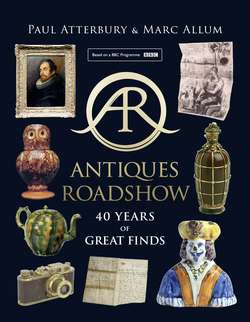Читать книгу Antiques Roadshow: 40 Years of Great Finds - Paul Atterbury, Paul Atterbury - Страница 20
A WATERLOO CHEST
ОглавлениеA small wooden cupboard, surmounted by a carved recumbent lion, was an unexpected find when the Roadshow visited Poole in 1998. Roy Butler, the militaria specialist on duty that day, knew exactly what it was. ‘It was a great day for me. I’d heard about Waterloo chests and seen photographs of three, but I’d never seen and handled a real one until the owner brought this one to me.’
The Battle of Waterloo in 1815 was an event of crucial importance. It saw the final defeat of Napoleon, ending twenty-three years of war between Britain and France, and also made possible the shaping of modern Europe. In a famously long and hard-fought battle, the French army was overcome by a coalition of British, Dutch, Belgian and Prussian armies under the command of the Duke of Wellington. The outcome was, as Wellington famously remarked, ‘a close run thing’.
Soon, the battlefield, and the buildings and other features on it, became a site of pilgrimage, attracting visitors from many countries. Booths were set up to sell souvenirs and relics from the conflict. A large elm tree, under which Wellington sheltered while his armies were readying for battle, was a particularly popular spot, and visitors flocked there to touch the tree and take away pieces of it. Soon, so much bark had been stripped off by souvenir hunters that the tree began to die. In 1818, an enterprising Englishman called John Children bought the tree from the Belgian farmer in whose field it was growing. From its timber, a throne was made for George IV as well as a number of chests and other, smaller souvenirs. Roy Butler explained that all the chests seemed to be similar, with two doors set with laurel wreaths and the lion on top representing the Lion Mound on the battlefield, above the word Waterloo.
The owner had acquired the chest from her father who had owned it for years and never liked it. Not realising its significance, he had been about to consign it to the coalshed when she had rescued it. It had been restored and she began to research its history. She discovered the connection with the Battle of Waterloo but, with no idea of the cupboard’s rarity and importance, was very surprised when Roy valued it for £25,000.
